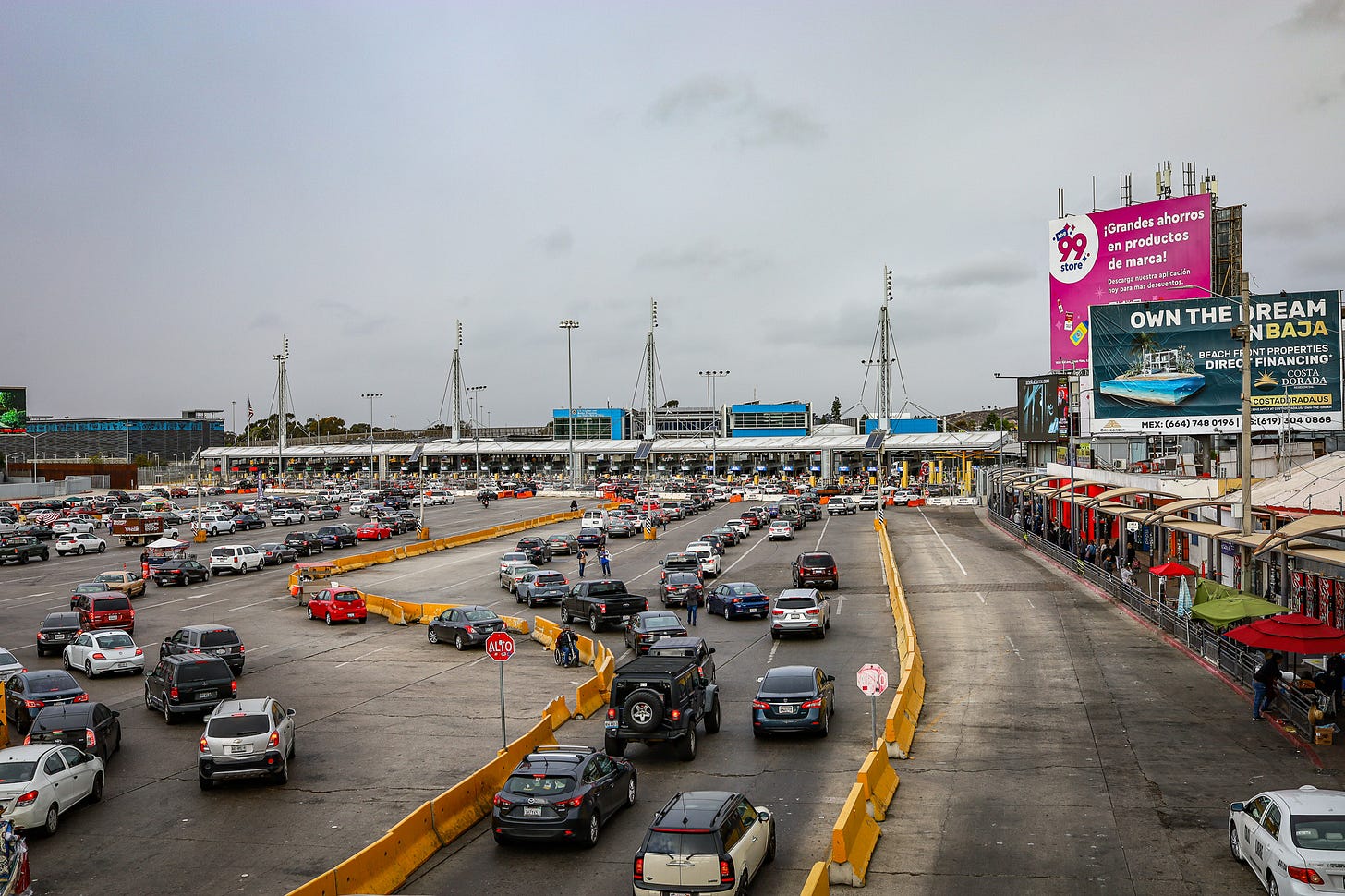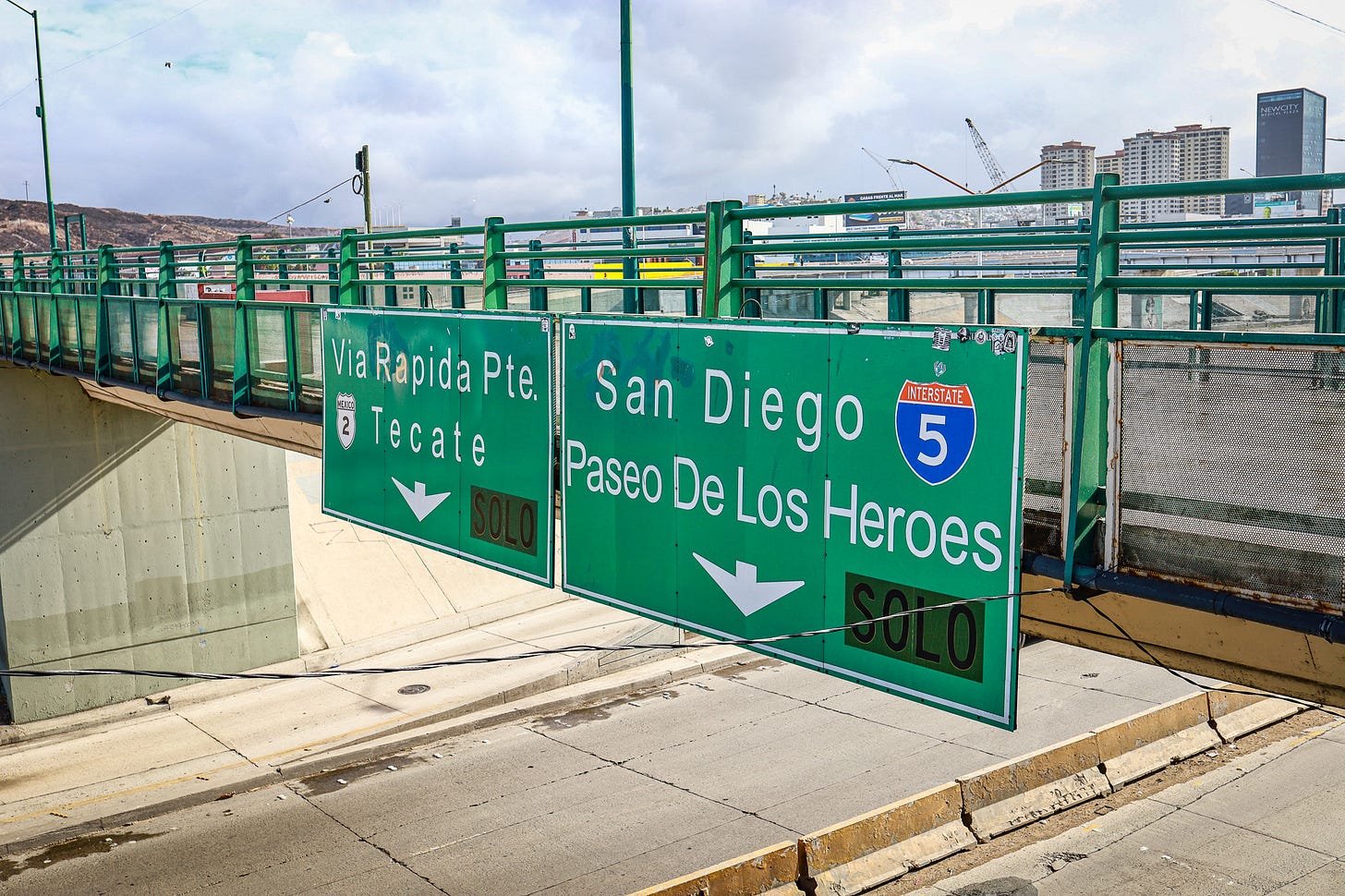Towards a Genealogy of Immigration Data
On the ground in San Diego for the first time in 20 years to understand the lifecycle of federal immigration data.
San Diego was the first city I fell in love with.
In 1999, when I was a wee lad, the U.S. Navy sent me to San Diego for about nine months of training and when I wasn’t doing work that I can’t talk about because it is classified (no, seriously), I was exploring the city, the museums, the beaches, and in one anxious night in which I (wholesomely sober) became suddenly responsible for an inebriated underaged friend, Tijuana.
I always believed that I would return to San Diego to pursue my dream of one day going to college. This was, after all, why I had joined the military in the first place.
Instead, my next visit to San Diego was twenty years later, not as a student but now as a professor and researcher (and one far more attentive to, and critical of, military power) to study the border enforcement infrastructure in the region.
That’s right. Last week and the week before, I was in San Diego talking to immigration attorneys, reporters, human rights activists, fellow researchers, and local residents to get a better handle on what I suppose I’ll call the generative, localized practices that both draw on and produce federal immigration data.
Immigration data doesn’t just exist, it comes from somewhere. And in order to fully understand that data (or any data), one needs a genealogy of its production, as well as the epistemic absences in the data that contribute to the kinds of pictures that can (and can’t) be developed in TRAC’s lightroom of data research.
Think of it like this. If you were a car mechanic, it might be incredibly valuable to get to visit a factory and watch a car being made from scratch, right? It’s like that with data, too. Data is produced just like a car is produced: it has raw materials, it goes through a process of assembly, and many times (not always) it arrives in public in the form of reports and charts that hide its own processes of production.

Immigration data, like new cars, often arrives pristine, even though in reality they hide the difficult and highly-selective work that goes into producing them. Understanding the entire process from beginning to end can help you to dissect it more carefully.
I am also interested in the other side of this data story: how various stakeholder groups use (or don’t use or misuse) federal immigration data, which might provide insight into how to do my job better.
I can’t share the substance of the conversations I had or identify the people I talked with. What I will do in the coming days and weeks is bring you along with me on this journey so you can see what I see, not through policy analysis or through media headlines, but through my perspective as a researcher.
One more thing.
Since I’m making a concerted effort to take a step back from social media, I won’t be promoting these posts online and I won’t be trying to track so closely with news and policy headlines (though some amount of that will be unavoidable). Lots of people already do that and do it better than me. But I’m not a policy wonk and I’m not a journalist, nor do I want to be either of those things.
Instead, I want to lean into something that I am more uniquely suited for, which is combining ethnographic fieldwork, critical reflection, and data stories in a way that you won’t get elsewhere. If you’re into that and think others might be into that, I’m relying on you to share this with others. I’m more interested in connecting with interested and curious readers than with vanity metrics like “likes” and “shares”. In fact, I’m going to stop adding those annoying little “subscribe” buttons in the middle of posts, too.





I am definitely looking forward to reading about your findings!